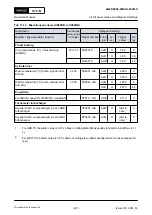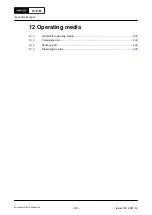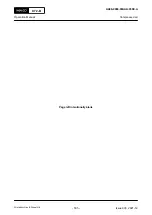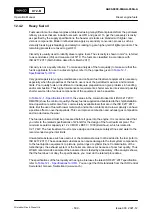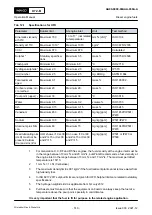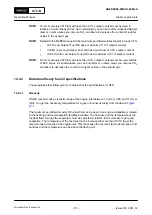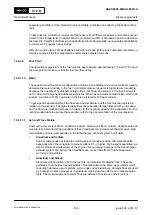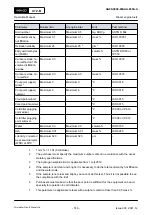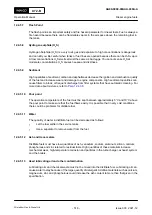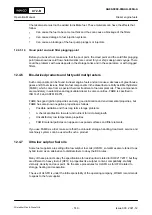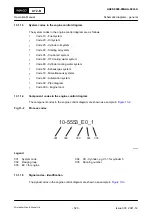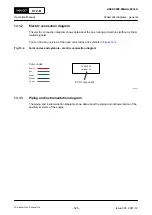
NOTE:
From 1st January 2015 fuel with less than 0.1% sulphur content must be used in
Emission Control Areas (ECA). As an alternative you can burn LNG (Liquefied Natural
Gas) or in some areas you can use SO
X
scrubbers to decrease the content of sulphur
oxides in the exhaust gas.
NOTE:
Related to the MARPOL annex VI the maximum permitted sulphur content in fuel is 3.5%.
•
LSFO (Low Sulphur Fuel Oil) has a maximum of 1.0% sulphur content
•
VLSFO (Very Low Sulphur Fuel Oil) has a maximum of 0.5% sulphur content
•
ULSFO (Ultra Low Sulphur Fuel Oil) has a maximum of 0.1% sulphur content.
NOTE:
From 1st January 2020 fuel with less than 0.5% sulphur content must be used outside
of ECA zones. As an alternative you can burn LNG or in some areas you can use SO
X
scrubbers to decrease the content of sulphur oxides in the exhaust gas.
12.4.3
Data about heavy fuel oil specifications
The paragraphs that follow give more data about the specifications for HFO.
12.4.3.1
Viscosity
WinGD recommends a viscosity range at the engine inlet between 13 mm
2
/s (cSt) and 17 mm
2
/s
(cSt). You get the necessary temperature for a given nominal viscosity from the data in
.
The maximum permitted viscosity of the fuel that can be used in an engine installation is related
to the heating and fuel preparation facilities available. The flow rate and the temperature of the
fuel that flows through the separators must be adjusted in relation to the viscosity to get good
separation. The temperature of the fuel must not be increased to more than 150°C to get the
recommended viscosity at the engine inlet. This is because the fuel can start to decompose, form
particles and the temperature can be above the flash point.
X72-B
AA00-0000-00AAA-030A-A
Operation Manual
Diesel engine fuels
Winterthur Gas & Diesel Ltd.
- 511 -
Issue 003 2021-12

